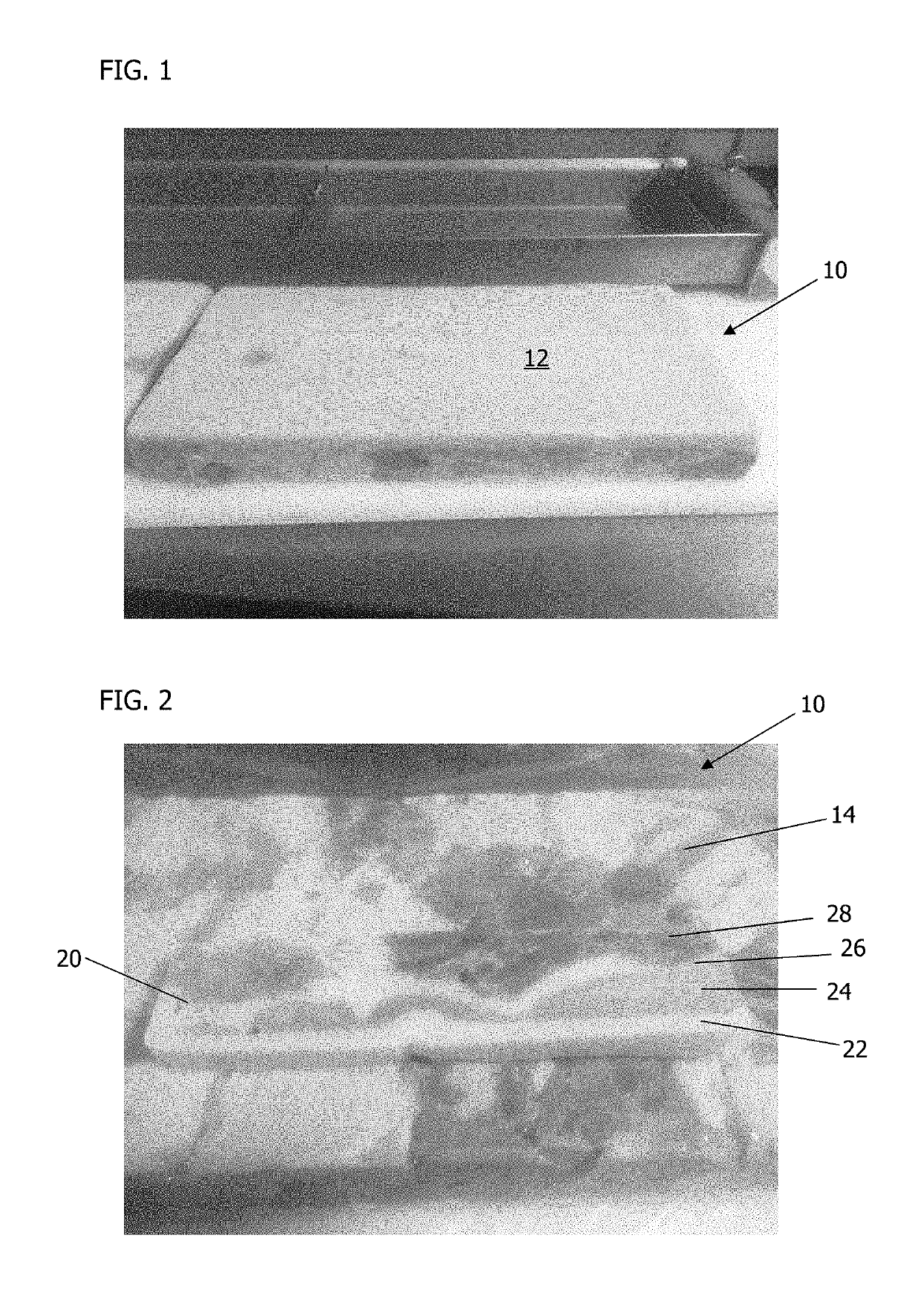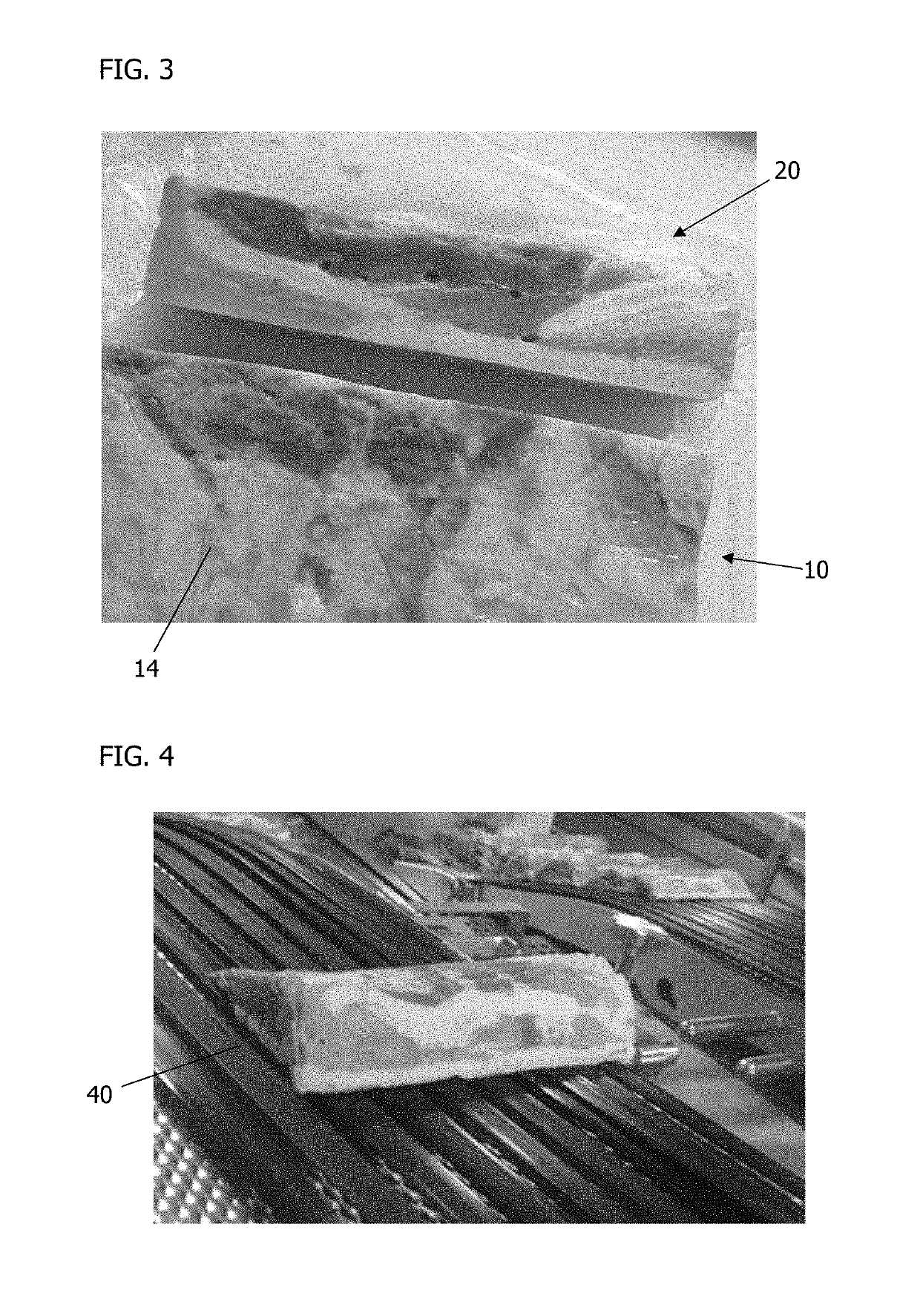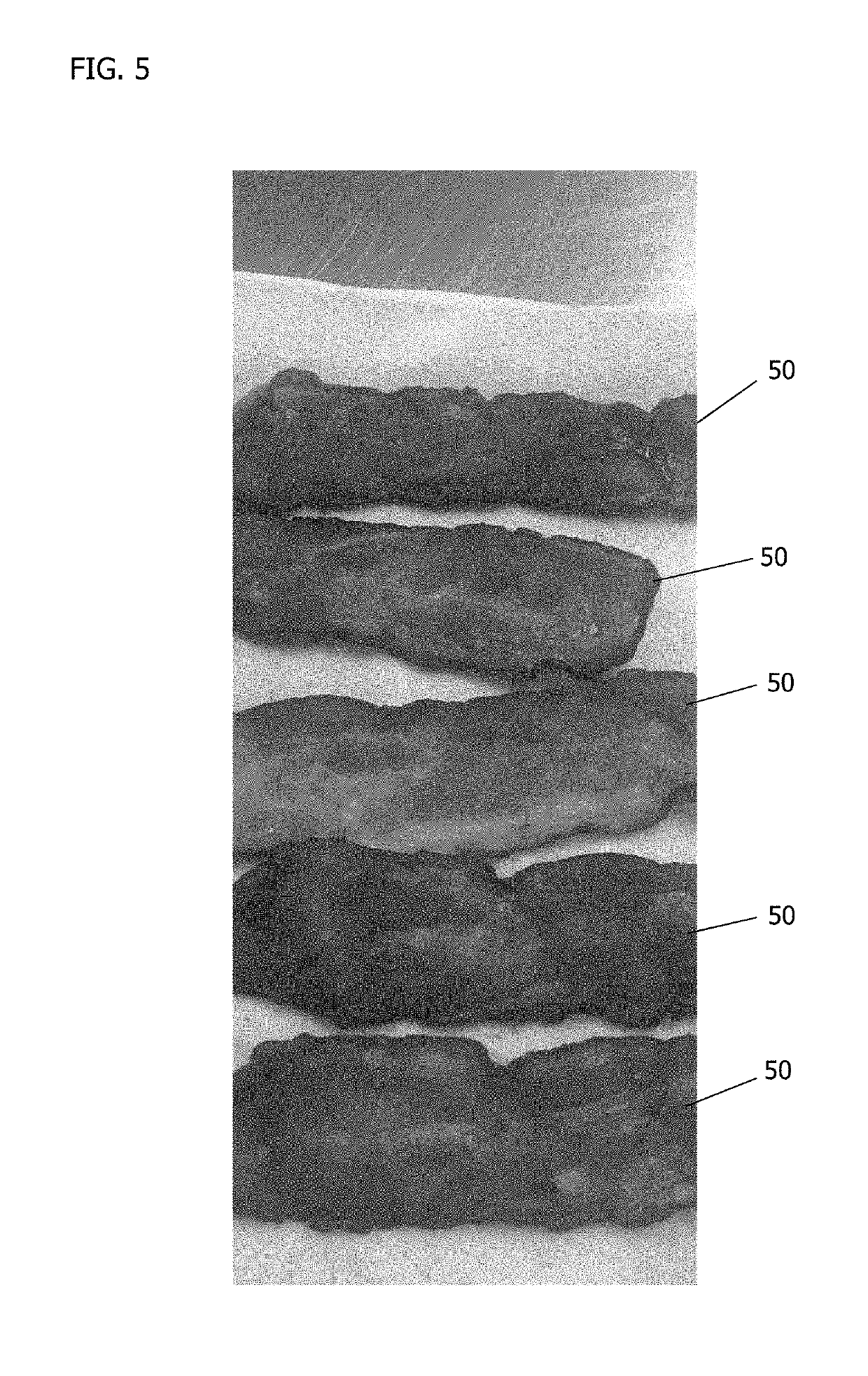Bacon product and method of making
a technology of bacon and products, applied in the field of meat products, can solve the problems of two to three pounds of trimmings per hog
- Summary
- Abstract
- Description
- Claims
- Application Information
AI Technical Summary
Benefits of technology
Problems solved by technology
Method used
Image
Examples
example 1
[0039]Trimmings of pork belly fat (40% wt.) having an equal amount of side strap and back fat and pork belly lean (60% wt.) having an equal amount of flank trim and boot jack were obtained. The trimmings were injected with pickling spices and hand macerated followed by tumbling for one hour at 32 rpm.
[0040]Following tumbling and maceration, the trimmings were hand layered in a mold lined with plastic sheeting. After layering, the top layer was also covered with plastic, and the mold lid was applied and tightened to compress the layers. The mold was sent to a cooker for steam cooking the compressed layers of trimmings in a smokehouse environment to an internal temperature of 135° F. (57.2° C.), forming a cohesive pork belly mass. The cohesive pork belly mass was demolded, chilled, and sliced into individual bacon slices.
example 2
[0041]Trimmings of pork belly fat (45% wt.) having an equal amount of side strap and back fat and pork belly lean (55% wt.) having an equal amount of flank trim and boot jack were obtained. The trimmings were mechanically macerated, followed by tumbling for two hours at 32 rpm in a pickling solution.
[0042]Following tumbling and maceration, the trimmings were randomly machine layered in a mold followed by steam cooking in a smokehouse environment to an internal temperature of 135° F. (57.2° C.), forming a cohesive pork belly mass. The cohesive pork belly mass was demolded, chilled, and sliced into individual bacon slices.
[0043]FIG. 1 shows the reconstructed belly slab 10 after demolding. The reconstructed belly slab 10 is oriented with the fat side 12 on top in FIG. 1.
[0044]FIG. 2 shows the reconstructed belly slab 10 oriented with the lean side 14 on top. A slice 20 of the reconstructed belly slab 10 is on top of the lean side 14 of the reconstructed belly slab 10. On the cut face o...
example 3
[0048]Trimmings of pork belly fat (45% wt.) having an equal amount of side strap and back fat and pork belly lean (55% wt.) having an equal amount of flank trim and boot jack were obtained. The trimmings were hand macerated followed by tumbling for two hours at 32 rpm in a pickling solution.
[0049]Following tumbling and maceration, the trimmings were hand layered in a mold followed by steam cooking in a smokehouse environment to an internal temperature of 135° F. (57.2° C.), forming a cohesive pork belly mass. The cohesive pork belly mass was demolded, chilled, and sliced into individual bacon slices.
PUM
 Login to View More
Login to View More Abstract
Description
Claims
Application Information
 Login to View More
Login to View More - R&D
- Intellectual Property
- Life Sciences
- Materials
- Tech Scout
- Unparalleled Data Quality
- Higher Quality Content
- 60% Fewer Hallucinations
Browse by: Latest US Patents, China's latest patents, Technical Efficacy Thesaurus, Application Domain, Technology Topic, Popular Technical Reports.
© 2025 PatSnap. All rights reserved.Legal|Privacy policy|Modern Slavery Act Transparency Statement|Sitemap|About US| Contact US: help@patsnap.com



